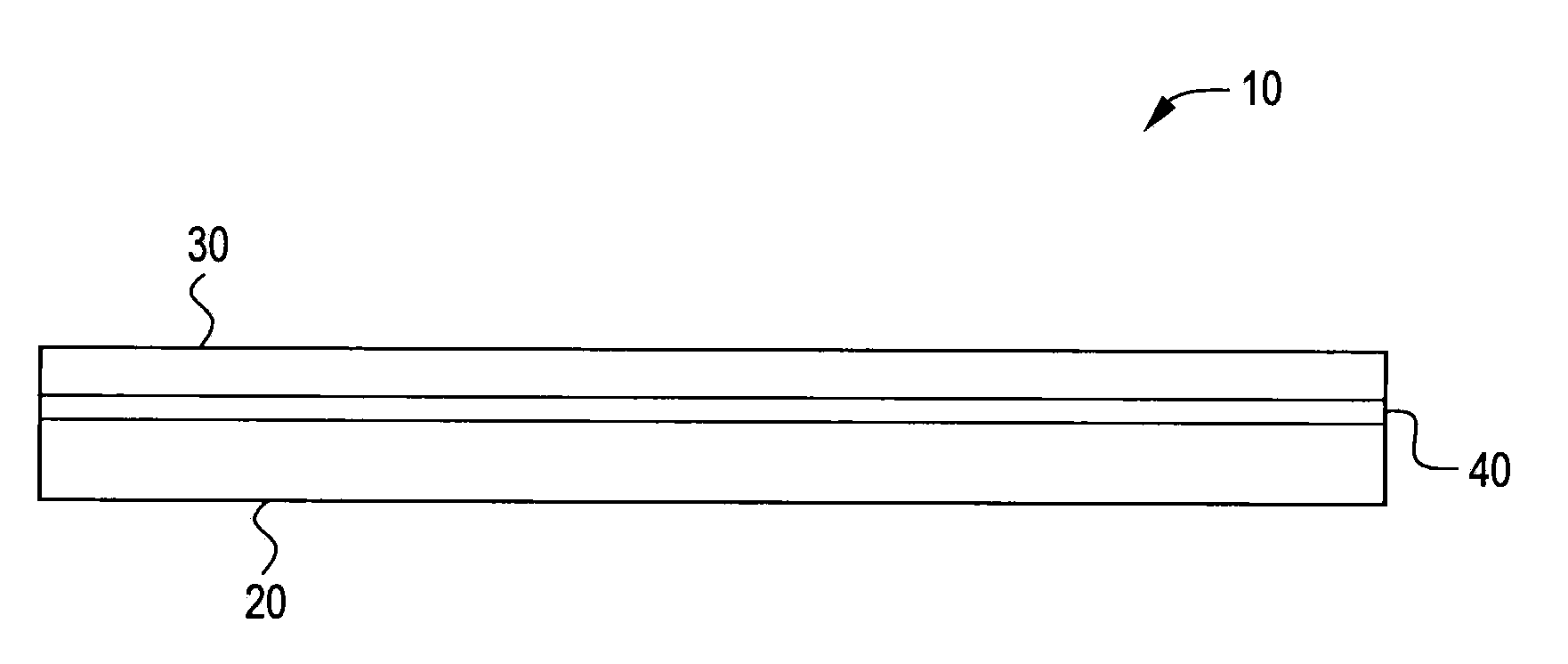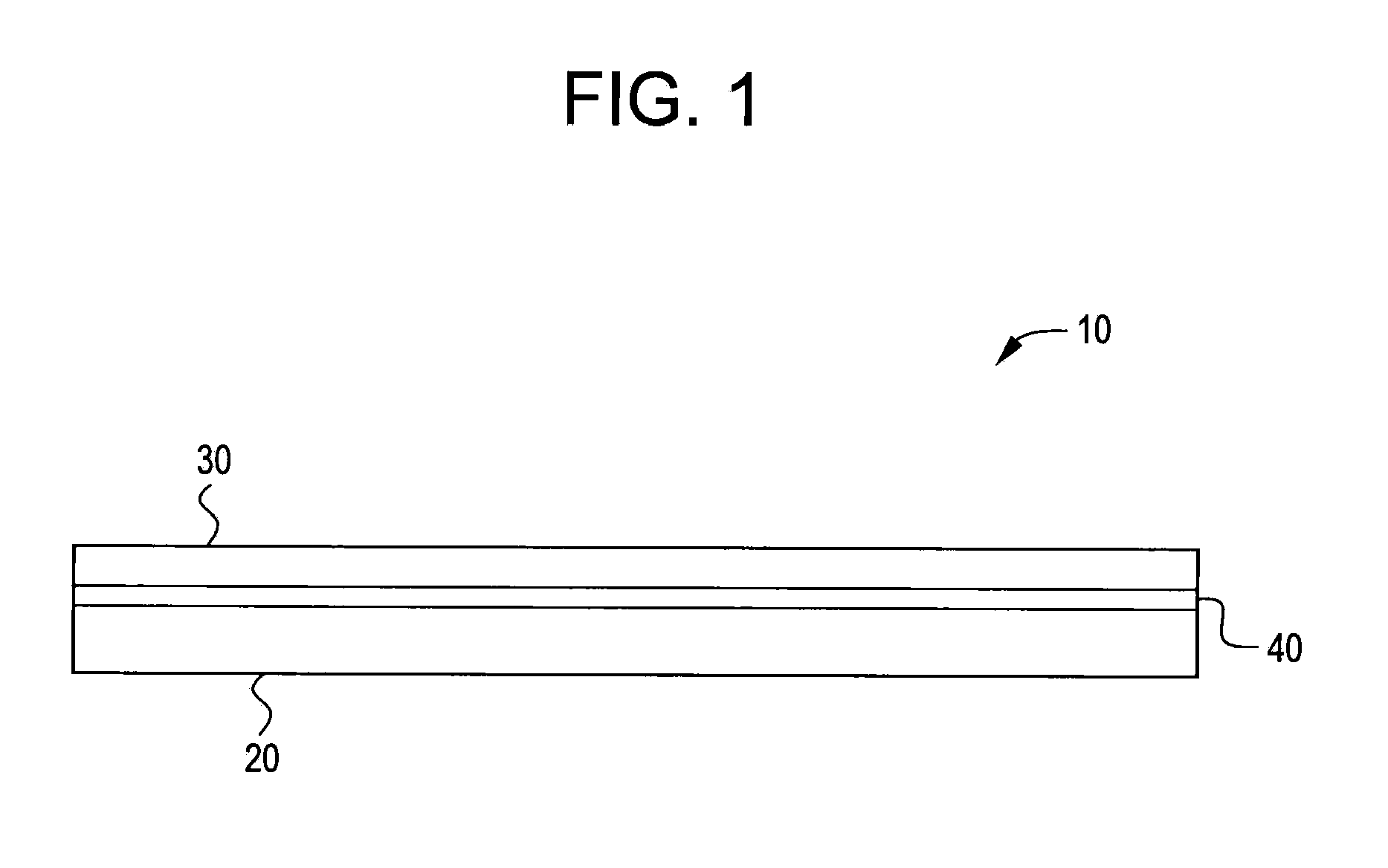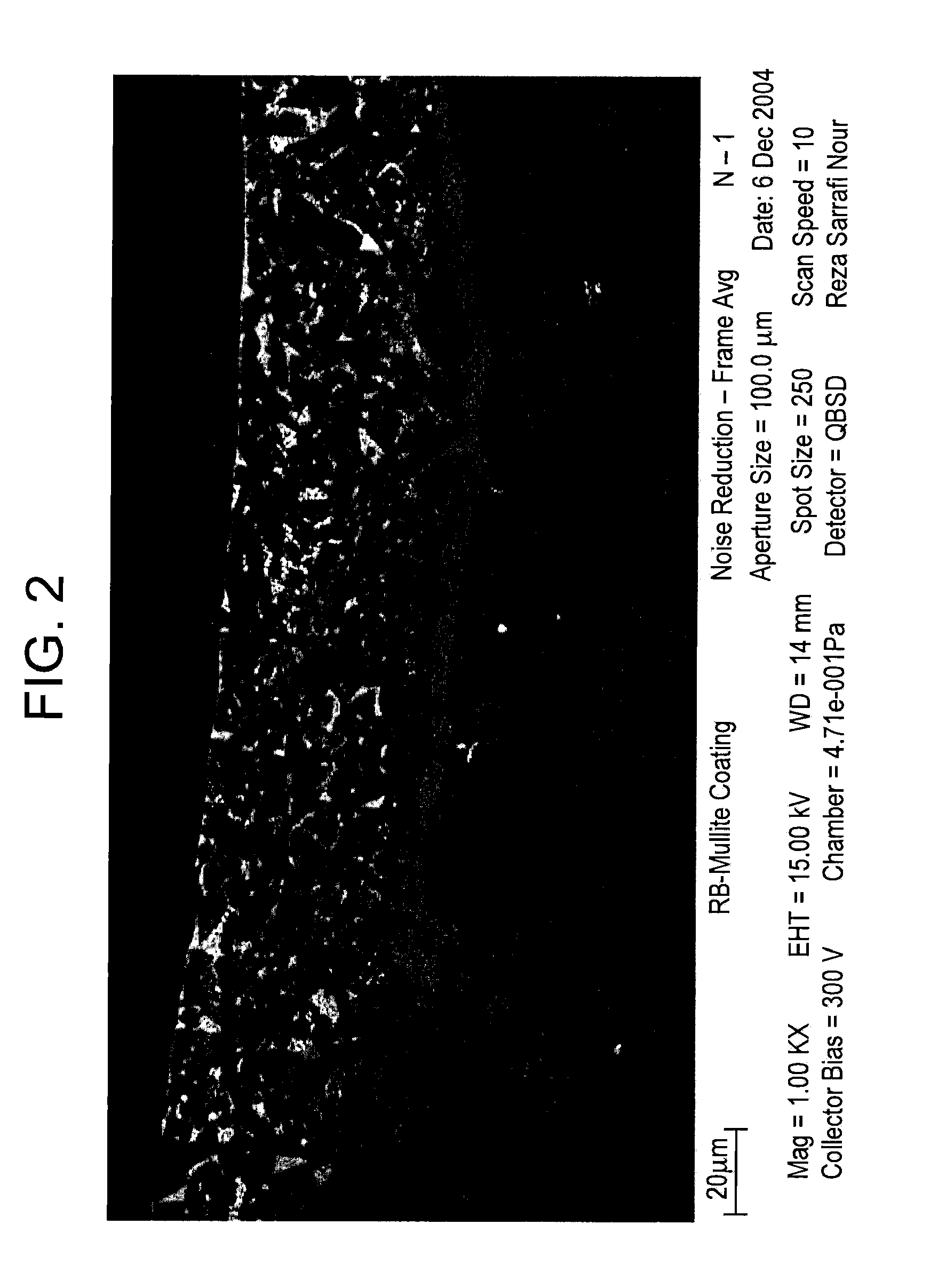Methods of fabricating environmental barrier coatings for silicon based substrates
a technology of environmental barrier coating and substrate, which is applied in the direction of coatings, mechanical equipment, machines/engines, etc., can solve the problems of significant surface recession and mass loss of silicon-bearing materials, unacceptably high recession rate, and plasma spray process can have several limitations
- Summary
- Abstract
- Description
- Claims
- Application Information
AI Technical Summary
Benefits of technology
Problems solved by technology
Method used
Image
Examples
example 1
[0033]The method described herein was evaluated by reaction bonding mullite (RBM) to a ceramic matrix composite substrate comprising a silicon carbide reinforced with fibers comprising silicon carbide (SiC—SiC CMC). A slurry was prepared by mixing 2.55 moles (M) of a metallic silicon powder, 1.85 M aluminum oxide (Al2O3), 0.15 M RE2O3 (wherein the rare earth oxide can be selected to be yttrium oxide, ytterbium oxide, and / or lutetium oxide) together with 40 to 60 percent by total weight (wt. %) water, 1 to 2 wt. % colloidal silica as binder, and 0.1 to 1 wt. % Octanol® as a de-foaming agent. The solid and liquid constituents were mixed in a plastic container on a standard bench-top paint shaker for about 15 minutes using 2 millimeter (mm) diameter milling media. Upon complete mixing, the Octanol was added to the resulting slurry and the slurry was stirred further for homogenization. Colloidal silica was used as a binder and was 30% (w / w) in water. The colloidal silica was LP30, manuf...
PUM
| Property | Measurement | Unit |
|---|---|---|
| temperature | aaaaa | aaaaa |
| shrinkage | aaaaa | aaaaa |
| thickness | aaaaa | aaaaa |
Abstract
Description
Claims
Application Information
 Login to View More
Login to View More - R&D
- Intellectual Property
- Life Sciences
- Materials
- Tech Scout
- Unparalleled Data Quality
- Higher Quality Content
- 60% Fewer Hallucinations
Browse by: Latest US Patents, China's latest patents, Technical Efficacy Thesaurus, Application Domain, Technology Topic, Popular Technical Reports.
© 2025 PatSnap. All rights reserved.Legal|Privacy policy|Modern Slavery Act Transparency Statement|Sitemap|About US| Contact US: help@patsnap.com



